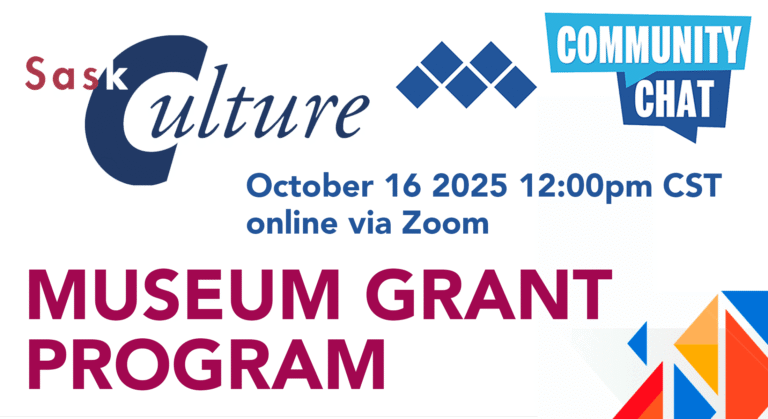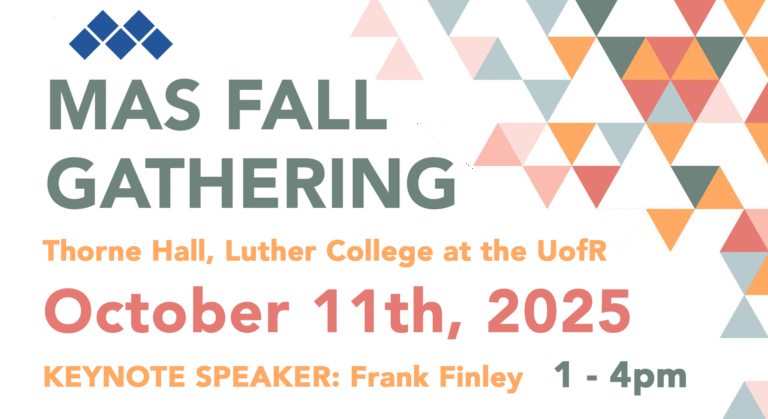By Kathleen Watkin, MAS Museum Advisor
Universal Design is the concept of designing all products and the built environment itself to be aesthetic and usable to the greatest extent possible by everyone, regardless of their age, ability, or status in life.
The idea grew out of disability access—the design or retrofit of buildings and technologies to be accessible to people with disabilities, such as wheelchair users, people with low vision, or people who are hard of hearing. Most of the time, features of the built environment that are accessible to people with disabilities are retrofits, meaning that they are added on after a design is already planned.
However, since the introduction of the Canada Human Rights Act (1985) and the UN Convention of the Rights of People with Disabilities (2006), museums and other public buildings have developed innovative accessibility strategies and policies, including design features that follow Universal Design.
Universal Design moves beyond accessibility to ensure that all museum experience are not only accessible for all ages and abilities but is also enriching and satisfying. Universal Design is not a design style, but an orientation to design, based on the following premises:
1. Disability is not a special condition of a few;
2. Disability is ordinary and affects most of us for some part of our lives;
3. If a design works well for people with disabilities, it works better for everyone;
4. Usability and aesthetics are mutually compatible
The Universal Design principal do not only apply to the exteriors of museums, but to exhibit designs as well. Exhibition planners should aim to plan and develop exhibitions that will be accessible to the widest possible audience. This includes incorporate multiple ways to communicate information to visitors who have different abilities and limitation as well as different learning styles beyond viewing objects and reading labels. This will provide the visitor with the opportunity to choose how they want to learn and interact with the exhibition.
Incorporating Universal Design into Exhibits:
- The building should be physically accessible so that visitors can get into and around the museums easily without any barriers to prevent movement in and around the exhibition areas. This includes level pathways, accessibility routes that are large enough for wheelchairs to fit, benches/chairs for people to rest, and elevators for multiple floored buildings (when possible)
- Display Case that are accessible so that all visitors can view and interact with the case’s contents. This can include using display cases that are not too high so that someone in a wheel chair can see in, ensuring wall mounted exhibits cases do not protrude too far out as to be a hazard to people and the flow of traffic around the museum and when placing items in display cases, the smaller items are at the front, with the large items behind, so everyone can see.
- Tactile Experience, such as replicas of an artifact, a small-scale three-dimensional model of a building or landscape, or a fur sample to support a natural history display should be used as much as possible. Tactile experience benefit people with visual impairments, but can also help to engage and education younger visitors as well as visitors that cannot read the associated texts.
- Audio projections, such as explanations, environment sounds, or historical dialogue or speech with text scripts and open captioning should be incorporated. Open Captioning of videos benefit deaf and hard of hearing visitors, but also help people who have difficulty hearing the audio because of noise. It can also be beneficial for people who are learning English to read and listen to what is being said at the same time.
- Providing audio self-guided tours that can be used by anyone.
- For docent-guided tours, demonstrations or performance, consider providing a text script or outline for the audibly or visually impaired visitors. You can also train your tour guides to describe exhibits in greater detail or in evocative ways.
- Interactive Components, such as active how-it-works demonstrations, using technology to view artifacts or building reproductions of artifacts using historical techniques, help to engage audiences different learning styles.
- Visitor Friendly Labels where the language is active, clear and concise, when larger panels are broken up into small paragraphs, the text is familiar and common face type, and is large enough to read from a distance. Large print labels not only accommodating people with visual impairments, but also helping visitors at the back of the group or people who forgot their reading glasses to read the label/text from far away.
- If possible, provide alternative formats (Braille, Audio) for people who cannot read print.
- Lighting must be bright enough for people to be able to view the artifacts and read, but low enough as to not permanent damage the artifacts unnecessary.
Best Practice
The best practice is to adopt a visitor-centred and empathic approach to exhibit design. It can be helpful as you develop a new or review an exhibit to create personas or fictitious visitors who possess a range of abilities. Staff or volunteers can then act out those roles as they imagine a visit to your museum. This exercise can rapidly expose obstacles for visitors and begins to build empathy for the range of people who visit your museum.
Conclusion
All visitors, with their diverse needs, interest, and abilities should be able to move about, enjoy and interact with the exhibition without barriers. Incorporating Universal Design ideals into your exhibition plans will create an environment of inclusion for the broadest possible audience.
For more information, See:



